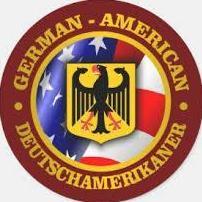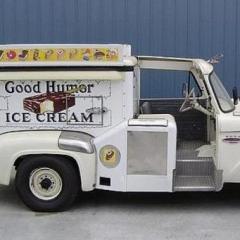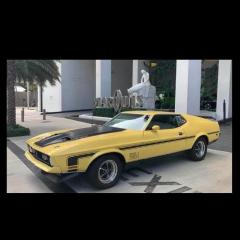
Matt Bacon
Members-
Posts
2,737 -
Joined
-
Last visited
Matt Bacon's Achievements

MCM Ohana (6/6)
-
Anyone seen this in the wild yet? It's due imminently, but will only make it this side of the pond several months after the US release, so has anyone seen it over there yet? best, M.
-
Don’t be sad because he’s gone; be glad because we had him. This community is bigger than any individual member, but this community is what it is BECAUSE of every member who contributes. @Snake45 was one of those guys who make this place, this place. I’m sorry to see him go, and condolences to his family. But remember him with fondness, ask yourself “What would @Snake45 do? And then think REALLY HARD about whether you’d want to do the same. Whatever the answer, participate… best, M.
- 42 replies
-
- 6
-

-

-
- d___
- ill miss him
-
(and 1 more)
Tagged with:
-
This project began when Classic cars magazine introduced me to the "AC 289 Sports MkIII". ACs Ace was the starting point for the increasingly fearsome Cobra. As it evolved over the years from 62-67, the Shelby Cobra got heavier, wider and way more powerful, The final 427 was curvaceous to the point of caricature, with wide hips flaring over broad tyres, and the engine bay crammed full of a powerful, big and heavy engine. That later Cobras also boasted in improved chassis with coil sprung suspension all round. As Shelby parted company with AC, taking the Cobra name, the English company built one last batch of these: the AC 289 Sports Mark III. Combining the coil spring chassis with the lighter 289 cu inch Ford V8 for better handling on twisty roads, and a narrower body better suited to British B roads (and picturesque continental mountain byways), it's a Cobra in all but name, a thug in a Jermyn Street suit, if you like... If you want to see the real one that inspired this build (and provided lots of useful reference photos, it's here: https://girardo.com/car/1967-ac-289-cobra-sports-mkiii-1/ The starting point was the still-good-after all these years Monogram 1/24 Cobra 427, in a "Dream Rides" box that has no scoop in the hood, and chrome bumpers that can be adapted to the over-riders only look I needed. The major changes were narrowing the body substantially at the rear, flipping the cockpit from left to right-hand drive (which is not just the dash but rebuilding the foot wells with pedals shifted to the driver's side, and replacing the massive 427 mill with the 289 from a Revell Mustang GT350 (thanks to @Ace-Garageguy for the steer). Lots of work under the hood as well to add the details that are missing from the 427 S/C because you can't see them around that mahoosive engine. The full build thread is here: And if you were wondering exactly how an AC289 Sports MkIII compares to a full-fat Cobra 427 S/C, here's one I prepared earlier: Now to go and do something a bit less complicated! best, M.
- 27 replies
-
- 16
-

-
purple LED - any such thing?
Matt Bacon replied to fiatboy's topic in Model Building Questions and Answers
Well, white LEDs and transparent blue and red paint from Tamiya all exist, so if an actual purple LED doesn’t, it shouldn’t be too hard to fake it… best, M. -
AC 289 Sports MkIII, starting with a Monogram Cobra
Matt Bacon replied to Matt Bacon's topic in WIP: Model Cars
First time in a long while I've got this out: "Rotisserie" adapted from an eBay "PCB soldering station" with a 50cm pice of steel rectangular tube to mke it usable for 1/24, 1/25 scale cars and trucks, and 1/35 armour... Exhaust components stolen from a "spares or repairs" E-Type and finished with some aluminum "bootlace ferrules" of the right size. Note, I have NO idea how the actual exhaust run on the Girardo and Co AC289 Sports Mk III that I'm using for reference. Sadly they didn't put it on a lift for the auction photo shoot. I can see some silencer components under the cabin and everything is under the chassis, with no side pipe or out-turn. I can see that the outlets are under the rear wings at each side. But I can't find any reference for how they get round the rear axle. I'm assuming (though I haven't tried to model this) that the pipes go up and over the suspension, like on a Mustang, or around the diff, like an E-Type. I know where they come out, and a bit of what they look like from the side, but much like the suspension and engine mounts, it's my best shot at what the real thing might be like, not an accurate model. Taking advantage of being on four wheels to open up the hood. Just the shiny details to go now... best, M. -
AC 289 Sports MkIII, starting with a Monogram Cobra
Matt Bacon replied to Matt Bacon's topic in WIP: Model Cars
Well, this feels like a milestone.... she's now sitting firmly on all four wheels. Next job will be the exhausts, since that's the last reason I'll need to turn it upside down, and then windscreen and chrome details... best, M. -
AC 289 Sports MkIII, starting with a Monogram Cobra
Matt Bacon replied to Matt Bacon's topic in WIP: Model Cars
So it did have to come apart again one more time..... access to the firewall wasn't good for attaching all the little boxes and greeblies... but now, I think I'm calling this engine bay done, and moving along. The top radiator "hose" is some aluminium florists wire I bought in several sizes for things like this and exhaust pipes. It's very flexible but not floppy, and goes where you put it and stays there. The rubber ends are heat-shrink tube. The characteristic and brightly-coloured "289 High Power" label on the air cleaner is a home printed decal... I found some old "Lazertran" paper lying around which promises that the inkjet colours dry and don't need a clearcoat, and to be on the safe side I freed the decal by putting the paper down on a damp cloth for a while rather than dropping it into water. The little boxes around the firewall, foot-wells and wheel wells are a combination of parts sliced from the original kit, some reading of a handy 289 Cobra wiring diagram and a Mustang parts supplier's online catalogue (want to know what the starter solenoid switch looks like? pretend you're buying one...), and some creative "gizmology". I should probably put a wash bottle in there somewhere. There is a steering column that runs almost to the right place, and I did manage to slip in the two diagonal frame braces in a way that looks reasonably convincing, thanks to the flexibility of styrene rod and the reasonable amount of wiggle room through the frame as I was working them into final positions. Time to get the wheels and exhausts on and then finish up the cockpit... best, M. -
AC 289 Sports MkIII, starting with a Monogram Cobra
Matt Bacon replied to Matt Bacon's topic in WIP: Model Cars
Apologies... I know it's been a while since the last progress report. A combination of going away for a long weekend somewhere hot and having to take several goes to get the next bit right has slowed things down somewhat... not to mention the fact the lawn is growing at a ridiculous rate and needs repeated attention! You need some kind of engine bay walls to hang some of the key components off. The base kit gets away with none, mostly by not including things like a battery or coil. The boxing in of the wheel wells provides the walls, but it took several attempts. In the end I used White Tak to take a profile of the body interior to get the shape of the end wall right and let that set in place, and then drew the bonnet edge profile onto plastic card to get the top curve of the inner fender. Finally some careful measurements along the chassis tubes sorted out where I needed gaps for the suspension components. The battery is sourced from spares and I built a tray for it to sit in. Trying to get everything to fit in and join up the plumbing and wiring is complicated by the fact that you have three main assemblies to bring together, and many bits of cable and tube that connect from one to another. For example, the upper radiator hose runs from the black "rubber" tube on the left hand end of the shroud over the hood hinge to the front of the engine, which is attached to the chassis. The battery cable runs round the firewall and down to the starter motor on the bell housing.... etc. The eagle-eyed will notice I've relocated the coil; on my reference pictures it's clearly alongside or ahead of the distributor, so it needed to move further forward. I hope I won't need to separate the assemblies again now, and can just start joining things up. It'll be interesting to see if I can run the steering column in something vaguely approximating the right place, and fit the two frame braces that connect the transverse hoop at the firewall to the front suspension frame uprights.... somehow. best, M. -
That's beautiful, Anders. Lovely finish, detailing and photography. It's a great kit, too, but you've made the very best of it. And I would say this, having done the same, but you've built it in the best color combo. I also think the original is peak American styling, before it all went nuts and then square... Your showroom checker base is great, too... Well done! best, M.
-
That looks lovely, Justin. Great colour scheme and beautifully executed paint and detailing. Is there actually a hinge in the bonnet? best, M.
-
Autoquiz #603 - Finished
Matt Bacon replied to carsntrucks4you's topic in Real or Model? / Auto ID Quiz
Yes, the hands of those carpenters at Versailles were rarely idle… best, M. -
What did you see on the road today?
Matt Bacon replied to Harry P.'s topic in General Automotive Talk (Trucks and Cars)
Obviously attempting to defeat the speed cops' radar guns with 1970s era Stealth technology... best, M. -
Tamiya 1/24 Nissan 240Z (street custom?)
Matt Bacon replied to Bennyg's topic in Car Kit News & Reviews
Take the bottom lip off the air dam and leave off the wheel arch extensions and you're well on your way to a Super Samuri, with rather less effort than some... 😜 best, M. -
AC 289 Sports MkIII, starting with a Monogram Cobra
Matt Bacon replied to Matt Bacon's topic in WIP: Model Cars
I haven't stopped working on this, but progress was slowed down by building a big Lego motorbike with the family... The cockpit is pretty much complete, though I wont be finally fixing the seats and steering wheel until the final assembly stage. I'm quite pleased with the AC badge on the wheel! The box of the kit that I bought had wire wheels with two-ear knock-off hubs. When I looked at them closely, they were AC branded, and Revell had moulded tiny but exquisite badges on the hubs. I sliced them off very carefully with a razor saw and one is now the steering wheel boss. You'll see the other two below, replacing the Cobra badges on the body... Finished the final details on the engine. Now I need some air filter decals.... The other two badges in place, along with the other details. The "bumpers" are cut out of the kit parts, cleaned up, and repainted with SMS Hyperchrome. Fixing the rear lights and fuel filler cap was nerve-wracking -- the sockets they recess into need to be created right on the seam line of the narrowed fenders, and I was very worried about opening up a crack somewhere visible. But I got away with it! I've made a hood stay with some guitar string socketed into a bit of brass tube under the right hand fender. You can also see the radiator header tank relocated from the firewall to the front of the engine, replacing the flat rectangular tank on the 427 Cobra. The top water hose needs to wait until the chassis and body are fully fixed together. best, M.



